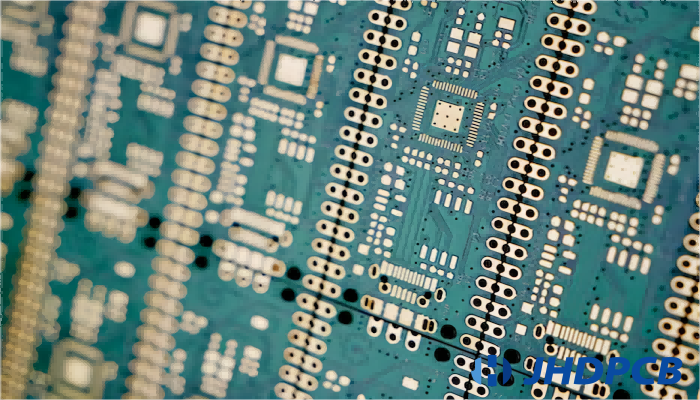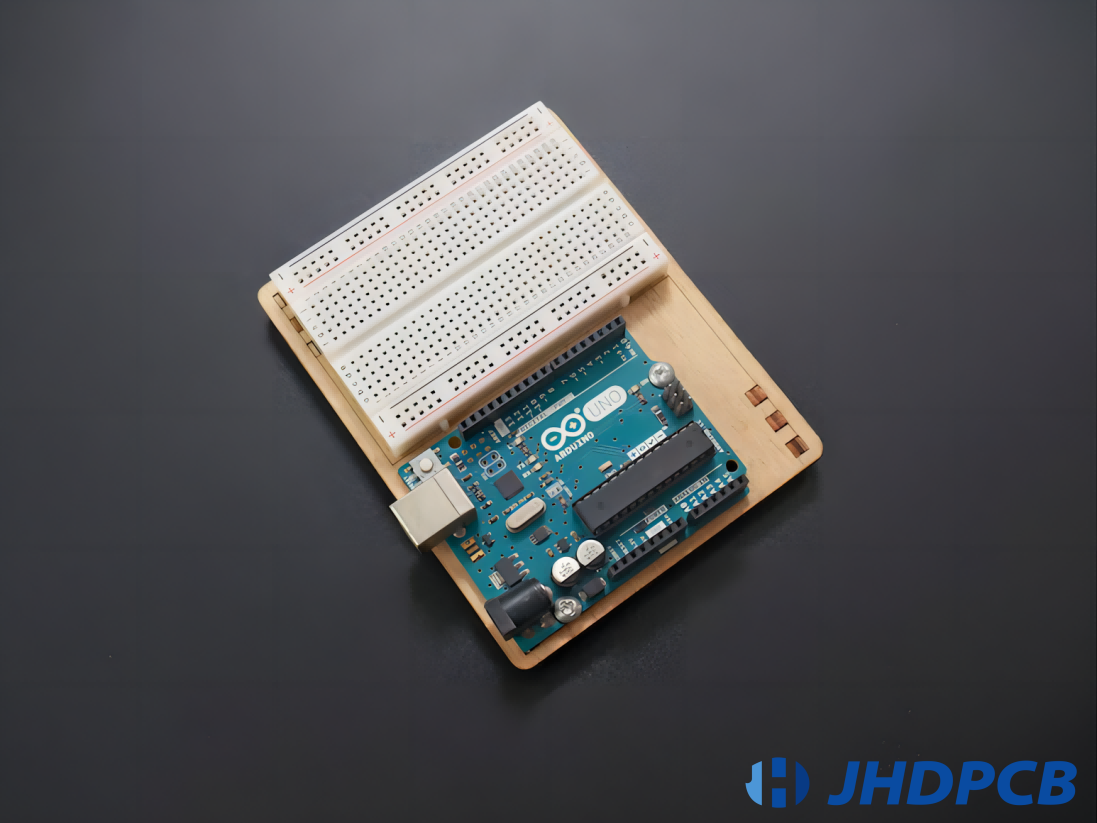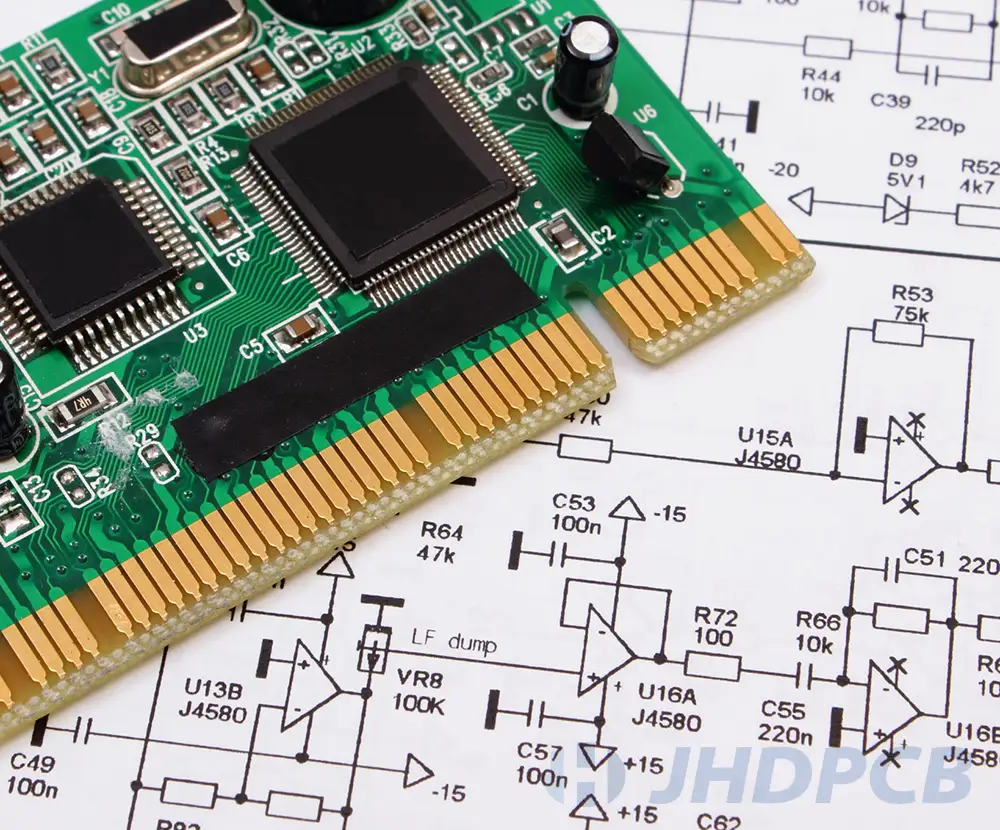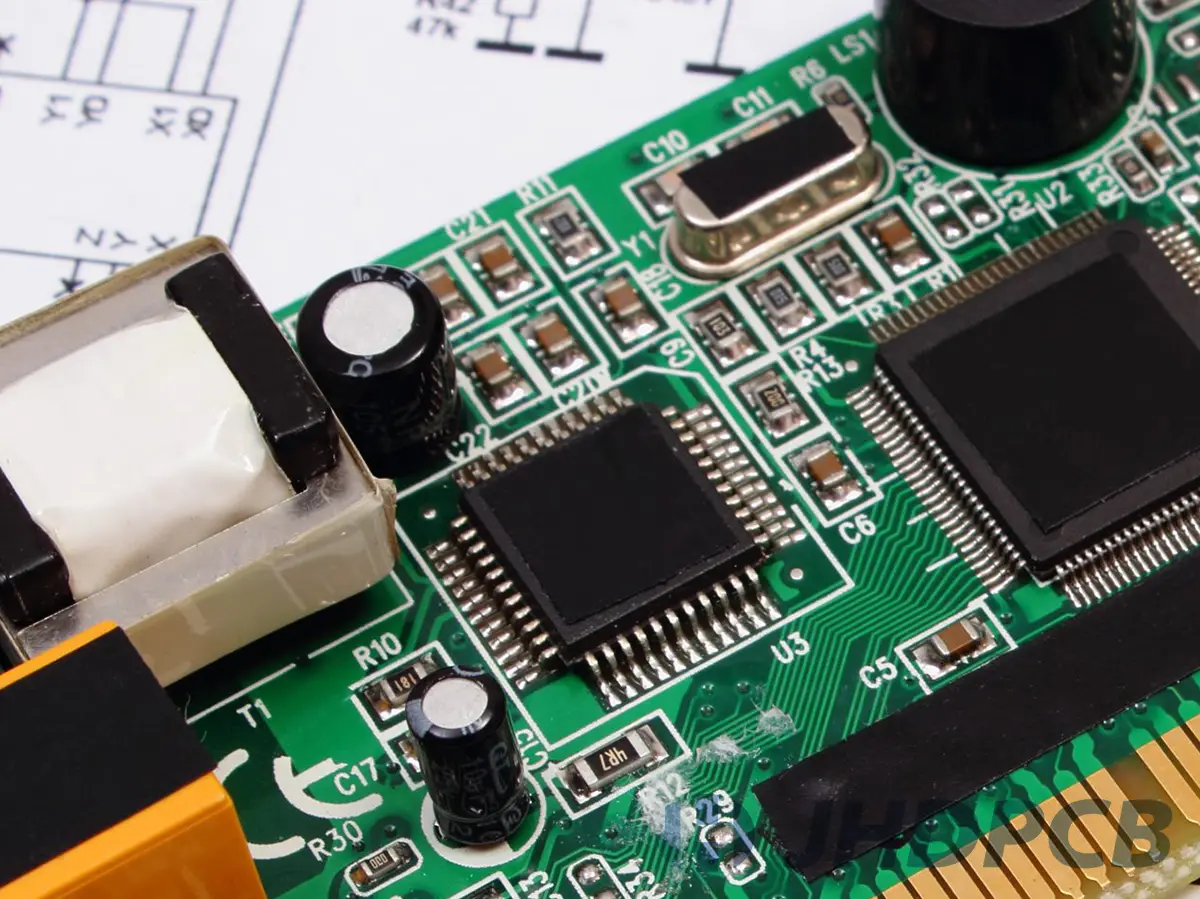CEM3 PCBs: Are They Worth the Investment? A Comprehensive Analysis
CEM3 PCBs, or copper-clad laminates made of paper and epoxy resin, have been commonly used in consumer electronic products for their low cost and adequate properties. While CEM3 is not as advanced as high-performance FR4 materials in material properties, CEM3 PCBs still have certain advantages that make them a suitable choice for many printed circuit board applications, especially for single-sided PCBs in common consumer electronics.
Compared to FR4, CEM3 is more economical in price due to the use of paper instead of glass fibers as the reinforcement substrate. The lower raw material cost is translated to lower production cost and retail price of CEM3 PCBs. For low-complexity PCB designs with low performance requirements such as in simple consumer gadgets, CEM3 can fulfill the basic electrical and physical needs at a more budget-friendly cost. Let’s more explore about it in our today’s discussion about PCB materials.
What is the CEM Material in PCB?
Composite epoxy materials (CEM) are a group of composite materials typically made from woven glass fabric surfaces and non-woven glass cores combined with epoxy synthetic resin. They are typically used in printed circuit boards.
CEM3 is a cheaper alternative to the popular FR4 material which uses glass fiber reinforcement. By substituting glass fiber cloth with paper, CEM3 reduces the raw material cost, making it more affordable for low-budget PCB boards productions. However, the inferior properties of paper also mean that CEM3 PCBs may not perform as well as FR4 PCBs, especially for high-complexity or high-reliability applications.
The main advantages of CEM3 are its low material and production cost. CEM3 is suitable for consumer electronic products where high performance is not critical but low cost is desirable. For simple single-sided or double sided PCB with large component spacing and low operating frequencies, CEM3 can work adequately while saving cost.
What About CEM-3 Performance?
The CEM 3 PCB exhibits characteristics that are in line with the FR-4 standard, including glass transition temperature, water absorption, peel strength, dip resistance, insulation resistance, UL index, electrical breakdown, and more. The primary difference between the CEM 3 and FR-4 is that CEM 3 has lower flexural strength and higher thermal expansion.
Despite this difference, processing metalized holes is not a problem for CEM 3 PCBs, and wear on the drilling bit is minimal. Punch forming and punching are also straightforward, and the accuracy of thickness dimension is high. However, the performance of metalized holes is inferior to that of other materials.

CEM-3 Material Properties
| Test Item | Unit | Test Method (IPC-TM-65) | Test Condition | Specification (IPC-4101D) | Typical Value |
|---|---|---|---|---|---|
| Peel Strength (1 oz.) | N/mm | 2.4.8 | 125℃/Float 260°C/10 Sec | >0.70 ——– ≥1.05 | 1.62 1.60 |
| Thermal Stress | Sec | 2.4.13.1 | Float 260°C/unetched | ≥10 | 120 |
| Bow / Twist | % | 2.4.22.1 | A | ≤ 1.0 | 0.17 /0.35 |
| Flexural Strength | N/mm² | 2.4.4 | Length direction/ Cross direction | >276 >186 | 450 390 |
| Flammability | Rating | UL94 | UL94 | UL94 V-0 | V-0 |
| Glass Transition (Tg) | ℃ | 2.4.25 | E-2/105 DSC | >130 | 136 |
| Surface Resistivity | ΜΩ | 2.5.17.1 | C-96/35/90 | ≥1.0×10° | 1.0×10 |
| Volume Resistivity | MQ-cm | 2.5.17.1 | C-96/35/90 | ≥1.0×10° | 1.0×10 |
| Dielectric Constant | —— | 2.5.5.2 | Etched/@1 MHZ | <5.4 | 4.6 |
| Loss Tangent | ——- | 2.5.5.2 | Etched/@1 MHZ | <0.035 | 0.020 |
| Arc Resistance | Sec | 2.5.1 | D-48/50-D-0.5/23 | >60 | 125 |
| Moisture Absorption | % | 2.6.2.1 | D-24/23 | ≤0.50 | 0.20 |
| Z-Axis Expansion | ppm/”C % | 2.4.24 | Alpha 1 ———- Alpha 2 ———— 50-260℃ | —— | 36 270 3.94 |
| Comparative Tracking Index | V | IEC 60112 | Etched / 0.1% NH.CL | >600 | 600 |
| Thermal Conductivity | W/m·K | ASTM E-1461 | LFA447 | ——– | 0.8±0.2 |
| TD | ℃ | 2.4.24.6 | TGA | ——– | 323 |
FR4 PCB Material Properties and Market Applications
FR4 PCB, also known as Flame Retardant 4 Printed Circuit Board, is a widely used material in the electronics industry. It is known for its excellent material properties and versatility, making it suitable for a wide range of applications.
Material Properties of FR4 PCB:
- Flame Retardant: As the name suggests, FR4 PCB is flame retardant, which means it has the ability to resist the spread of fire. This property is crucial in electronic devices where safety is a top priority.
- High-Temperature Resistance: FR4 PCB can withstand high temperatures without losing its structural integrity. This makes it suitable for applications where the circuit board may be exposed to elevated temperatures, such as the automotive and aerospace industries.
- Electrical Insulation:FR4 PCB has excellent electrical insulation properties, making it ideal for applications where electrical components need to be isolated from each other. It prevents short circuits and ensures the proper functioning of electronic devices.
- Mechanical Strength: FR4 PCB is known for its high mechanical strength, allowing it to withstand various stresses and strains. It can endure vibrations, shocks, and impacts, making it suitable for applications in rugged environments.
Market Applications of FR4 PCB:
- Consumer Electronics:FR4 PCB is extensively used in consumer electronic products, including smartphones, laptops, televisions, and gaming consoles. Its flame retardant epoxy resin property ensures the safety of these devices, while it’s high-temperature resistance and mechanical strength make it suitable for everyday use.
- Automotive Industry: The automotive industry relies heavily on FR4 PCB for various applications. It is used in engine control units, car navigation systems, airbag sensors, and other electronic components. The high-temperature resistance of FR4 PCB ensures its performance in the extreme conditions of automotive environments.
- Aerospace Industry: FR4 PCB is also widely used in the aerospace industry due to its excellent material properties. It is used in avionics systems, satellite communication devices, and flight control systems. The flame retardant property of FR4 PCB is particularly crucial in aerospace applications to prevent the spread of fire.
- Industrial Equipment: FR4 PCB finds its applications in industrial equipment, such as power supplies, motor drives, and control systems. Its electrical insulation property ensures the safe operation of these devices, while its mechanical strength allows it to withstand the demanding conditions of industrial environments.
- Medical Devices: FR4 PCB is also used in medical devices, including patient monitoring systems, diagnostic equipment, and implantable devices. It’s flame retardant property and electrical insulation make it suitable for these critical applications, ensuring the safety and reliability of medical devices.
As the core material of PCB, the three main raw materials for the production of CCL include glass fiber cloth, epoxy resin and copper foil, and PCB relies on them to realize the functions of conduction, insulation and support. Among them, glass fiber cloth and epoxy resin are often used as prepregs.
CEM-1 PCB Material Properties and Market Applications
Material Properties of CEM-1 PCB:
CEM-1 is the lowest grade in the CEM family of PCB substrate materials. It uses paper as the reinforcement fiber, giving it the lowest cost but also the poorest properties among major PCB substrates. Due to its inferior qualities, CEM-1 PCBs are rarely used in today’s high-performance electronic products.
The main property of CEM-1 is its low raw material cost. By using paper instead of glass fibers, the CEM-1 substrate is the cheapest to produce. This cost-savings is passed onto the PCB production and end products, making CEM-1 PCBs appealing for extremely budget-sensitive applications.
However, the properties of CEM-1 also make it unsuitable for most modern PCB needs. Compared to FR-4 and high-Tg alternatives, CEM-1 has the lowest heat resistance, typically not exceeding 105°C. Its poor dimensional stability leads to larger variances in PCB thickness and higher sensitivity to humidity. CEM-1 also provides inferior electrical insulation and dielectric strength, limiting its applications to low voltages and frequencies.
Market Applications of CEM-1 PCB:
Due to these technical deficiencies, CEM-1 PCBs can only be used in very basic designs with large component spacing, low circuit density, and lenient performance requirements. They are not well-suited for the higher precision, higher complexity, and higher reliability needed in today’s electronic devices and systems. CEM-1 PCBs remain in limited use for only the lowest-end, price-driven consumer products where quality is sacrificed for cost.
CEM-3- PCB Material Properties and Market Applications
CEM-3 is a commonly used substrate material in the electronics industry, though not suitable for high-end products requiring high reliability like automotive sensors, controllers, or medical devices. It offers acceptable electrical and mechanical properties for some relatively low-end applications.
Material Properties of CEM-3 PCB:
CEM-3 is a composite material made of woven glass fabric and epoxy resin. It has moderate dimensional stability, mechanical strength, and electrical insulation. With a low dielectric constant and an average glass mat transition temperature, CEM-3 can be used for some applications requiring medium-speed signal transmission in normal environments. CEM-3 also shows acceptable resistance to moisture and chemicals for short-term usage.
Market Applications of CEM-3 PCB:
Low-end Printed Circuit Boards (PCBs): CEM-3 is sometimes used as a cheap substrate material for simple PCBs in some consumer electronics. Its mediocre electrical properties can meet the needs of low-frequency applications. CEM-3 PCBs may be seen in some ordinary telecommunications equipment, low-end consumer electronics, etc.
Common LED Lighting: CEM-3’s average thermal conductivity and heat dissipation make it suitable for some common LED lighting applications with low power and heat generation. The LED modules on CEM-3 substrates can work but may have a reduced lifespan. Moreover, CEM-3’s electrical insulation provides basic safety for simple LED circuit designs.
Industrial Controls: CEM-3’s moderate mechanical strength and electrical insulation properties allow it to be used in some low-end industrial control systems working under normal conditions. It can operate at regular voltages but may lack enough reliability for critical systems. CEM-3 can be used in basic power distribution units, motor drives, and control panels.
PCB CEM3 VS FR4: What is the Difference?
When it comes to choosing the right printed circuit board (PCB) for your electronic devices, it’s important to consider the specific requirements and characteristics of the materials available. Two popular options in the industry are CEM3 PCB and FR4 PCB. While both materials offer their own advantages, they differ in terms of composition, performance, and cost. In this section, we will explore the key differences of pcb cem3 vs fr4 to help you make an informed decision for your next project.
Composition:
CEM-3 is a composite material made of woven glass fabric and epoxy resin. It contains high filler content, resulting in higher density.
FR-4 is also made of woven glass fabric and epoxy resin but has lower filler content, so it has a lower density. FR-4 tends to have better electrical insulation properties.
Thermal Properties:
CEM-3 has a lower glass transition temperature, around 110°C, so it can withstand moderately high temperatures. FR-4 has a higher glass transition temperature, around 130-140°C, so it is more suitable for high-temperature applications.
CEM-3 has a higher coefficient of thermal expansion, so it may experience more warping and delamination in extreme thermal conditions. FR-4 has a lower coefficient of thermal expansion, so it is more dimensionally stable.
Mechanical Properties:
CEM-3 is more rigid and brittle, while FR-4 is softer and more flexible. So CEM-3 is more prone to cracking, while FR-4 is more resistant to flexing stresses.
Also, CEM-3 has higher tensile strength but lower impact resistance. FR-4 has high flexural strength and better impact resistance. CEM-3 shows slightly higher moisture absorption, while FR-4 has better resistance to moisture.
Electrical Properties:
CEM-3 has a higher dielectric constant, resulting in higher signal transmission loss. FR-4 has a lower dielectric constant, so it has better high-frequency signal performance. CEM-3 has a higher dielectric loss, so it may experience more signal degradation. FR-4 has a lower dielectric loss, leading to less interference and energy loss. Also, CEM-3 exhibits lower surface and volume resistivity, while FR-4 has higher resistivity values. So FR-4 provides better electrical insulation.
So, we can say, both CEM3 PCB and FR4 PCB offer their own unique set of advantages and characteristics. While CEM3 PCBs excel in terms of mechanical strength and durability, FR4 PCBs outperform in electrical performance and suitability for high-frequency applications.
How to Choose Which Material is Suitable|CEM-1, CEM-3 vs FR4 PCB?
When it comes to choosing the right material for your circuit board production, it is essential to consider factors such as stability and value. At JHDPCB, we specialize in all the materials for circuit board production. Let’s explore the benefits of all options such as FR4, CEM-1, and CEM-3 materials to make an informed decision.
FR4 is known for its excellent thermal and mechanical properties, making it a popular choice for high-performance applications. FR4 offers exceptional stability, ensuring that your circuit board functions reliably in various environments. Its high value lies in its ability to withstand high temperatures and provide excellent electrical insulation.
On the other hand, CEM-1 and CEM-3 are also commonly used materials in PCB production. CEM-1 is a low-cost material made from cellulose paper impregnated with phenolic resin. It is suitable for simple applications that do not require high thermal stability or mechanical strength. CEM-3, on the other hand, is a composite material made from woven glass fabric impregnated with epoxy resin. It offers better mechanical strength and thermal stability compared to CEM-1, making it a suitable choice for more demanding applications.
Although CEM-1 and CEM-3 have their advantages, FR4 stands out as the preferred choice for many reasons. Its stability and high value make it suitable for a wide range of applications, from consumer electronics to automotive and aerospace industries. FR4 provides excellent electrical insulation, ensuring reliable performance even in challenging environments. Its ability to withstand high temperatures and offer superior mechanical strength makes it a reliable choice for complex circuit board designs.
So, when choosing a suitable material for your circuit board production, it is crucial to consider factors such as stability and value. While CEM-1 and CEM-3 have their merits, FR4 remains the top choice for its exceptional properties. At JHDPCB, we understand the importance of selecting the right material, and we are committed to providing you with the highest quality FR4 PCBs for your specific needs. Trust in our expertise and experience to deliver reliable circuit boards that meet your requirements.
What About Other Material Options Like FR1, FR2, and FR3?
While FR4 is the most commonly used material, there are other alternatives worth exploring. Lets, ‘s take a closer look at FR1, FR2, and FR3, and discuss their properties and potential applications.
FR1
FR1, also known as phenolic paper, is a cost-effective material that offers good electrical insulation properties. It is composed of a phenolic resin binder and paper reinforcement. FR1 is commonly used for single-sided and double-sided PCBs with low complexity. However, it is not recommended for high-frequency applications due to its relatively poor electrical performance. Nonetheless, FR1 can be a suitable choice for applications where cost is a significant factor, such as consumer electronics or low-end industrial products.
FR2
FR2, or phenolic cotton, is another economical material option. It is similar to FR1 in terms of composition, but it uses cotton fabric instead of paper as reinforcement. FR2 offers better mechanical strength and higher thermal resistance compared to FR1. This makes it suitable for applications that require more durability, such as power supplies, lighting fixtures, and household appliances. However, like FR1, FR2 is not recommended for high-frequency applications due to its limited electrical performance.
FR3
FR3, also known as epoxy paper, is a step up from FR1 and FR2 in terms of electrical performance. It is composed of an epoxy resin system and paper reinforcement, offering improved insulation properties compared to phenolic-based materials. FR3 can be used for single-sided and double-sided PCBs with moderate complexity. It is suitable for applications that require better electrical performance but don’t necessarily need the high performance of FR4. Some examples include automotive electronics, control systems, fax machines, and industrial machinery.
Frequently Asked Questions About CEM3 PCBs
What is CEM3 PCB, and what are its advantages?
CEM3 PCB is a type of printed circuit board material made from woven fiberglass cloth impregnated with a composite material. Its key advantages include good electrical and thermal properties, high resistance to moisture and chemicals, and ease of processing.
What are the key applications of CEM3 PCB, and why is it used in those applications?
CEM3 PCB can work for some basic low-end uses requiring moderate properties. The choice depends on the specific needs and operating conditions of the applications.
What are the design guidelines for CEM3 PCB, and what should I keep in mind while designing my PCB with CEM3 material?
Design guidelines for CEM3 PCB include keeping trace widths and clearances within acceptable limits, avoiding sharp corners and acute angles, and using appropriate sizes and densities. Additionally, designers should consider the mechanical stress, thermal expansion, and moisture absorption characteristics of the material while designing the PCB.
What are the key advantages of FR4 PCB, and why is it widely used in the electronics industry?
FR4 PCB offers several key advantages, including high mechanical strength, good dimensional stability, excellent electrical insulation properties, and flame retardancy. It is also widely available and relatively low-cost, making it a popular choice for a wide range of electronic applications.
As we wrap up our discussion on CEM3 PCBs, CEM3 PCBs have their advantages, particularly when it comes to thermal conductivity and cost-effectiveness. They offer good heat dissipation properties, making them suitable for applications that require efficient cooling. At JHDPCB, we take pride in providing high-quality PCB solutions to our customers, and while CEM3 is a viable option, we highly recommend considering FR4 for your projects.
FR4 is a widely used and trusted material in the industry, known for its excellent electrical properties and reliability. It offers a higher dielectric constant, making it better suited for high-frequency applications. Additionally, FR4 PCBs are readily available and can be manufactured in various thicknesses and multi layer printed circuit boards to meet your specific requirements.
So, whether you select CEM or FR4, Trust JHDPCB to deliver top-notch PCB manufacturing that will take your project to new heights. Contact us today to discuss your requirements and let us help you bring your ideas to life.









